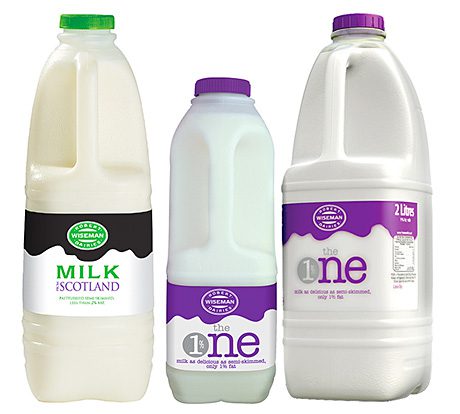
IN the 15 years prior to the launch of the Make Mine Milk campaign in 2010, milk sales in Britain had dropped by 20%. During that period Scotland had bucked the trend for a while when the generic promotional campaign The White Stuff was running. That was one of the reasons that the more recent British programme – run by The Milk Marketing Forum (a consortium of major British milk companies and co-operatives supported by Dairy UK) and funded in part by the European Commission, was launched.
The White Stuff, which ran from 2003 to 2008, featured celebrities including Andy Murray and Nell McAndrew. And, in part, Make Mine Milk did the same thing, though with families and teenage girls identified as the main targets there was a wider range of modern celebrities including boy and girl bands, other pop stars and sports heroes.
The campaign, peppered with celebrity faces sporting milky moustaches, was rolled out on buses and billboards across Britain.
Has it worked? Well, many of the signs on milk sales are positive, in terms of volumes at least.
Muller Wiseman Dairies, just one of the companies involved in the campaign that also included Arla Foods, Dairy Crest and First Milk, said that since the start of the promotion, the milk sales slump had halted.
In fact, from 2009 to 2012 sales rose by 3.9%, equating to 762m litres of milk being sold in that 3-year period.
And the trend has continued, with milk volume sales up in Great Britain by 1.8% in the year to November 2013.
And relatively recent figures from Kantar Worldpanel show something similar. It found that volume sales in liquid milk grew by 1.5% to 5.22bn litres during the year to July 2013.
But other findings on sales value suggest things have been difficult for milk when it comes to putting cash through tills.
The 2013 Key Note Market Update on the wider milk and dairy products in the UK said milk is responsible for a third of the total market value of the category. In 2012, the liquid milk sector experienced its highest sales value growth in five years, it said. But sales had risen by just 0.2%. And the value of sales of milk and dairy products over four years to 2012 had fallen considerably, which Key Note put down in part to tough economic times diminishing consumer purchases of food and in part to price-cutting promotions on milk and other dairy products.
The value of filtered milk sales grew substantially in 2012, however, rising by 3.9% to reach £250.9m.
The value of sterilised milk fell more quickly than that of any other sub-category of liquid milk – down 14.7% to £9.2m.
And sales of ultra-high temperature (UHT) milk also declined, falling by 4.8% to £192.2m, Key Note found.
Semi-skimmed pasteurised milk is by far the biggest seller.
However spending on other types of milk, especially skimmed milk appears to have increased in recent times.
Muller Wiseman says it has noticed a trend towards health-related products in the milk market, shown especially by substantial sales for its The One brand of skimmed milk. And the company reckons the development will continue through 2014.
Sandy Wilkie, Muller Wiseman Dairies’ sales and marketing director, said: “There can be no doubt semi-skimmed milk is still the biggest seller, however over the course of last year we’ve seen a staggering increase in The One – our 1% fat milk.”
The company said Nielsen figures show that The One saw 311% growth in value and now has a brand value of over £19.5m.
It puts the very significant sales increase rise down to growing consumer demand for healthier dairy options that don’t compromise on taste.
The One is doing particularly well in Scotland with Nielsen figures showing a 60.85% rise in value since 2012.


















